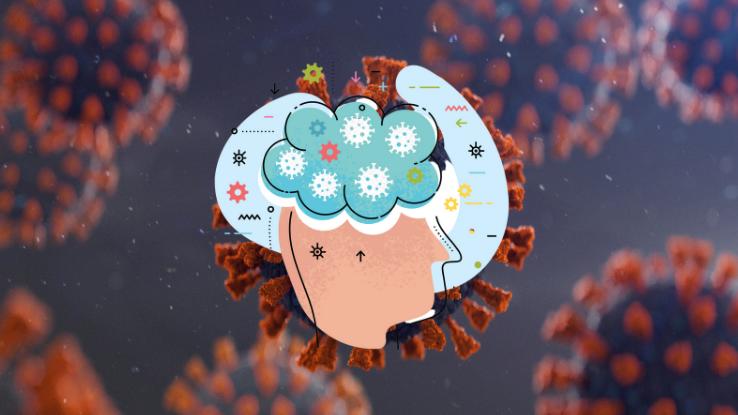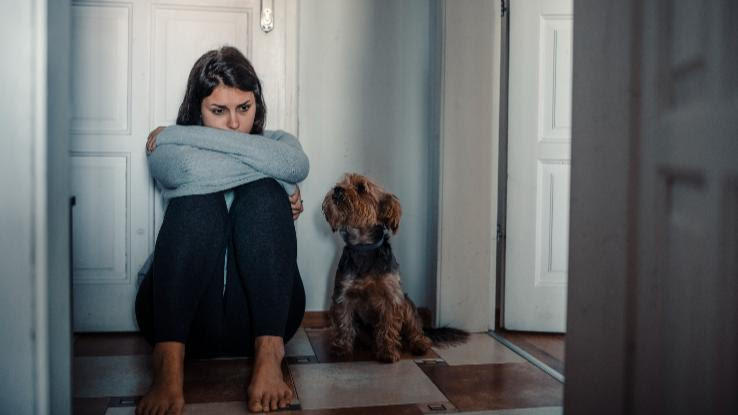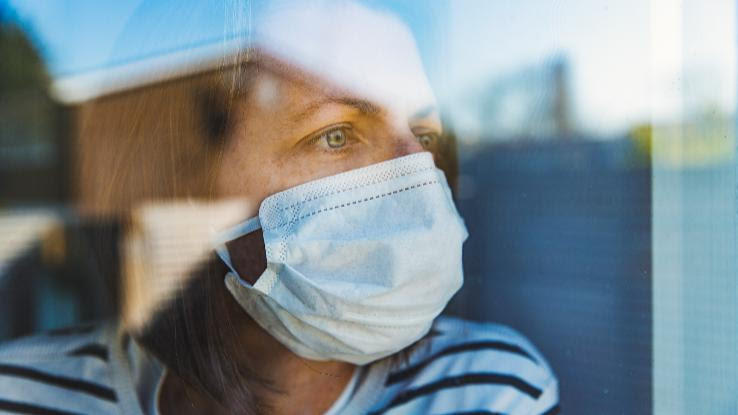
For all of us, it has been a trying 18 months. From sheltering in place and isolating from loved ones to learning how to work from home, the COVID-19 pandemic has taken a toll in myriad ways. Undoubtedly, many folks have noticed changes when it comes to their mental health and wellness, including increased instances of anxiety and depression.
While the Delta variant poses a new threat to public health and our communities, the vaccine rollout has allowed some Americans to find some kind of footing in the world again — even if that just amounts to grabbing a coffee, seeing friends at the park, or visiting the grocery store. For many, getting some of those small things “back” has felt euphoric, but that feeling certainly isn’t shared by all.
For folks who live with anxiety disorders, that euphoria might not be a reality. Undoubtedly, the pandemic — and the way it reshaped our lives — brought its own challenges, especially for folks with mental illness. But the idea of returning to a new normal? That certainly comes with its own sort of anxiety-inducing notions and triggers. Roughly 40 million Americans have an anxiety disorder and, if you are one of them, you may be wondering how to navigate this reshaped world in a way that feels safe — that feels doable — and we’re here to provide support if you need it.
Post-Covid Anxiety: Both the Pandemic and the “New Normal” Are Uniquely Challenging
Understandably, many of us have been focused on our physical health during the COVID-19 pandemic, but the mental health consequences have been immense as well. Dr. Lisa MacLean, a psychiatrist at Henry Ford Health System, recently spoke to the American Medical Association about the worldwide spike in anxiety, listing anxiety, trauma-related disorders, depression, domestic violence, substance abuse disorders, and even suicidal ideation as becoming increasingly common during the pandemic. “It’s critical right now that people acknowledge the stress of the pandemic,” Dr. MacLean says.

While there have been countless guides to dealing with new-found, COVID-induced anxiety, pandemic fatigue and more, many of these general accounts fail to acknowledge the implications for people who have anxiety disorders, like post-traumatic stress disorder (PTSD), panic disorder (PD) or generalized anxiety disorder (GAD), among others. In fact, some of the “tactics” folks suggest when it comes to navigating pandemic-related anxiety might actually be triggering to someone with an anxiety disorder.
For example, advising someone to “manifest” a more positive future might seem like a harmless suggestion — a suggestion that can help them manage their in-the-moment anxiety even. But for someone with obsessive-compulsive disorder (OCD), that suggestion can be incredibly harmful. Many people with OCD experience intrusive, ego-dystonic thoughts; by nature, these thoughts — such as thoughts about harming themselves or others — run counter to the person’s values, but the fear that they will come true feels visceral. Therefore, telling someone with OCD that they can manifest a positive thing may add to their anxiety that they can cause a harmful thing to happen just by thinking an intrusive, unwanted thought.
The Lingering Effects of an Ongoing Global Disaster
As anyone with an anxiety disorder knows, stress can be a major trigger of symptoms — even those that had begun to seem manageable pre-pandemic. “Every therapist has a waitlist; everyone is looking for more help,” Jeff Szymanski, the executive director of the International OCD Foundation, told The Atlantic when discussing the pandemic-induced spike in OCD-related symptoms. “People can’t find enough OCD specialists to hire.”
Anxiety disorders — such as OCD, PTSD, panic disorder, and generalized anxiety disorder — can be much harder to navigate if the person with the disorder feels alone or isolated. For some, being left alone with their anxious thoughts can be difficult. While it sounds trite, it may be helpful to remember that you aren’t alone; reaching out to others who live with the same anxiety disorder as you may be helpful. If you both feel able and willing to discuss your symptoms, it may help you find some clarity or come to understand yourself better. Of course, this isn’t a substitute for talk therapy or other prescribed treatments, but a support system — especially one composed of folks with similar experiences — can help.

Moreover, many have a lingering fear that the increase in symptoms — or new symptoms — won’t shift even after the pandemic ends. “Like some people with OCD across the country, I’m worried that I’m stuck with these new compulsions for the foreseeable future—that this time next year, I’ll still be struggling to put on sweatpants and walking around the park nodding at no one in particular,” Elaine Godfrey of The Atlantic said recently, sharing her own concerns. “My OCD is still manageable. It does not tend to seriously disrupt my life. But sometimes I ask myself: What if my symptoms only get worse from here on out? What if 2020 was the year my brain broke?”
It’s difficult to know how any of us will react in a post-pandemic world given the trauma of the last year plus. Godfrey’s doctor suggested that symptoms with pandemic-specific triggers may calm down in the future, but that may not be true for all folks.
What Can Individuals with Anxiety Disorders Do When They Need Support?
1. Ask for Help
Anxiety disorders can be especially confusing. Unfortunately, there’s still a lot of stigma surrounding mental illness, so some individuals may feel shame around a diagnosis or label — namely because most of these disorders and illnesses are gravely misunderstood or misrepresented. On the other hand, a lack of accessible information may mean that some folks don’t even know there’s a name for what they’re experiencing — or that what they’re experiencing isn’t just how everyone experiences the world.
In this way, consulting a professional can be life-changing; finding someone who understands what you’re going through — and who can provide you with a toolbox for managing your symptoms — can feel incredible. At first, it may cause feelings of anger, confusion or sadness, but having strategies for living with your anxiety disorder, which can range from talk therapy to medication to more disorder-specific practices, will likely feel good in the long-term.
2. Understand Your Mind
While putting a name to your disorder can feel powerful in its own right, beginning to really understand it — and yourself — can augment that feeling. Reading up on medically approved materials or even just personal essays written by folks with your disorder can help you better understand how your mind works.

3. Seek Interpersonal Support, Too
According to the American Psychological Association research, around half of all Americans were nervous about returning to in-person interactions at the pandemic’s end. Talking about your feelings with your friends, family, or members of a support group can be a great way to realize that there’s no need to feel guilt over your post-pandemic anxiety.
4. Start Slowly
When it comes to reintegrating into the world at large, the prospect of diving back in can feel overwhelming. Start slowly. Make a list of things you’d like — or will need — to start doing again. Notice how much or how little anxiety each individual item on your list provokes. Rearrange the list so that the least anxiety-provoking thoughts are at the top and see if you’re open to trying a few of them. For activities near the bottom of the list, try to break them down into smaller steps. If the thought of eating indoors at a restaurant still makes you anxious, ask yourself if starting with takeout or eating outdoors feels manageable.
Resource Links:
- “Books and Multimedia About OCD and Related Disorders” via International OCD Foundation
- ADAA Books via Anxiety & Depression Association of America (ADAA)
- “Did You Know?” via Anxiety & Depression Association of America (ADAA)
- “What doctors wish patients knew about post-COVID anxiety” via American Medical Association (AMA)





